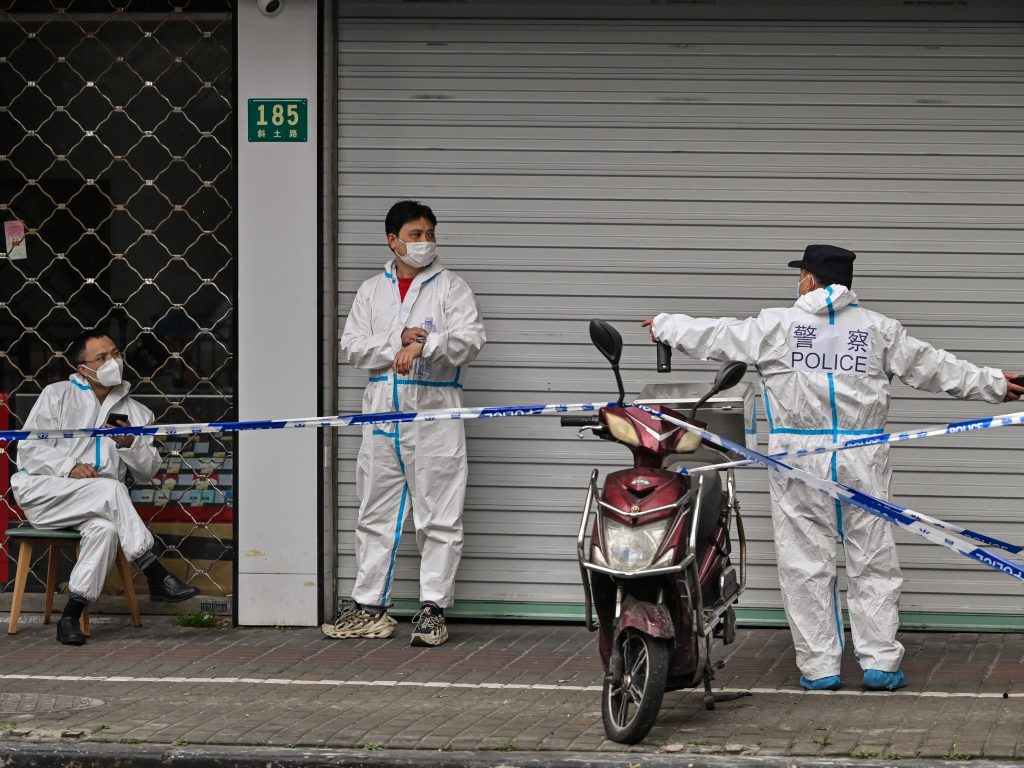- Tens of millions of people in China are back in strict lockdown.
- Surging numbers of coronavirus cases prompted the new measures.
- China describes its "zero-COVID" policy as "dynamic," seeking to block cases as they occur.
As populations in the US and other countries get rid of masks and plan summer holidays, tens of millions in China are back in strict lockdowns, causing frustration amongst residents and hampering global supply chains.
Surging COVID-19 case numbers, driven by the highly infectious Omicron variant, have prompted the new measures, as Chinese health officials stand by a "dynamic" zero-COVID-19 policy. That means rapid lockdowns, mass testing and travel restrictions when clusters emerge.
The weekly average number of daily cases in China is currently more than 1,600 — the highest since February 2020, according to Oxford University's Our World in Data. The vast majority of cases are in Jilin, a northeastern Chinese province that borders North Korea and Russia.
Jin Dong-Yan, professor at the University of Hong Kong, told Reuters that China's COVID-19 policy hadn't "completely broken down," but added that "daily increases of over 1,000 cases are a warning sign."
In Shenzhen, China's Silicon Valley, 17.5 million people are under stay-at-home orders for at least a week, with exceptions only being permitted for "essential reasons".
In Shanghai, China's commercial hub of 24 million people, schools and restaurants are shut. By stark contrast, as of Friday, the UK plans to remove all travel restrictions for international travelers, for the first time in two years. The UK was one of the slowest to enact controls in the wake of the initial outbreak in the Chinese city of Wuhan, and one of the earliest to ease restrictions.
The impact of China's lastest restrictions have already been felt worldwide. Some companies have been forced to suspend their Chinese operations, piling fresh uncertainty on supply chains. Apple's top iPhone assembler stopped operations in Shenzhen on Monday.
China's zero-COVID-19 approach has suppressed case numbers throughout the pandemic, but the strategy makes returning to normal life a challenge.
About 85% of the population have had two doses of homemade vaccines, according to Our World in Data, but it's not clear how effective they are against Omicron. Furthermore, due to the zero-COVID strategy, natural immunity levels in the population are low.
Mi Feng, a spokesperson at the National Health Commission said Tuesday that preventing and controlling epidemics had become "more difficult", but China's current strategy was still effective against Omicron, per Reuters.
Despite a rapid rise in cases for the country, the average number of new cases remains relatively low compared to the US and UK — as of Tuesday, the US had an average of 93 new daily cases per million, the UK had more than 1,000, and China had 0.89, according to Our World in Data.
Chen Zhengmin, professor of epidemiology at the University of Oxford, told Reuters that, regardless of cost, China's approach had worked and cautioned that the public might misinterpret any changes as "giving up".
"The next two weeks are key to determining whether existing policies can really be effective in curbing infection growth or even reaching completely zero cases in one city as we saw last year," he said.
In the meantime, some are frustrated.
Peter, a Shenzhen resident and owner of a VR startup, said he believes there was "no way" to stop Omicron now.
"The only way is to maintain normalcy and welcome the virus," he told Reuters."Many people have recovered and travelled everywhere. Why are we trapped here?"

